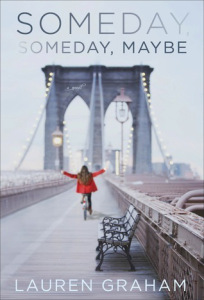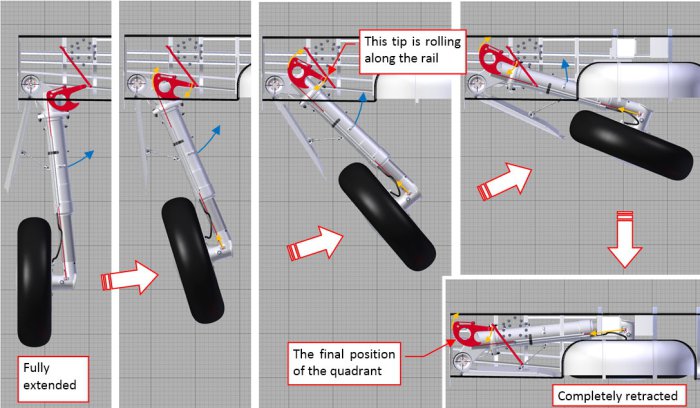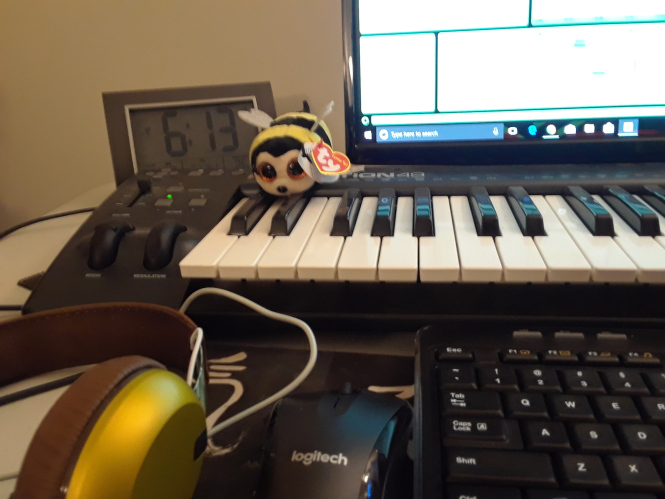Susan B. Anthony “Failure Is Impossible” Award
Presented to Nancy Schreiber at the High Falls Film Festival
November 2, 2017 at 5:30 pm
Little Theatre 1, Rochester, New York
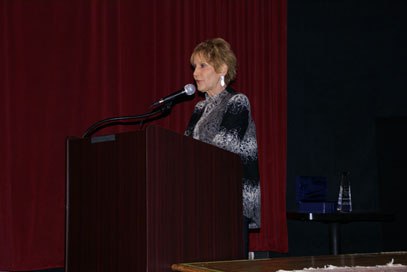
With:
Nancy Schreiber, ASC, Honoree
Nora Brown, Executive Director, High Falls Film Festival
Kate Hermann, Executive Director, High Falls Film Festival
Terry Lawler, Executive Director,
New York Women in Film and Television
Since the early 1970s, Nancy Schreiber has amassed numerous credits in narrative features, documentaries, and episodic television, first as a gaffer (lighting), then working her way up to cinematography. Among her credits include Neil LaBute’s Your Friends and Neighbors, John August’s The Nines, Barbara Kopple’s Shut Up and Sing, as well as TV Shows like In Plain Sight and Better Things.
The ceremony began with introductory speeches by the festival’s Executive Directors, Kate Hermann and Nora Brown, the latter of whom introduced Nancy Schreiber. Earlier in the day, Schreiber had an opportunity to visit both the Susan B. Anthony House and the Eastman House Museum. At the latter, she had an opportunity to look at the archives, the cameras, and walked around. Later on in her speech, she called the collection “Exquisite, fascinating, and just dear to my heart.” Schreiber began her speech by talking about the award’s namesake, Susan B. Anthony and discussing her accomplishments, including:
1853: Anthony begins campaigning for women’s property rights. In 1860, the married women’s property bill became law, allowing married women to own property and seek their own wages, and have custody of their children. This led to more liberal divorce laws in New York State.
1870s: Anthony begins campaigning with Elizabeth Cady Stanton all over the country for women’s rights. In 1872, Anthony tried to cast a vote in Rochester and was fined $100, which she never paid. From 1877 until her death in 1906, she would go to Congress every year to campaign to get the suffrage amendment passed. It would be passed in 1920, 14 years after her death.
1979: More than 70 years after her passing, the Susan B. Anthony Silver Dollar was issued.
For Schreiber, Rochester holds very special meaning to her. In addition to being the hometown of Susan B. Anthony, Rochester is the home of George Eastman and Kodak. She recently wrapped Mappelthorpe, documentarian Ondi Timoner’s biopic of the later photographer that is also her narrative debut, which she shot on Kodak film. “Kodak has been a huge presence in my life forever, especially in college, when I was shooting stills,” She recalled. “As I developed into a cinematographer, I would wait in anticipation for each new stock to come out, and there were a lot of them, and I couldn’t wait to test them.” Recognizing the industry’s shift toward digital, Schreiber believes that film and digital can still co-exist.
Following her speech, Schreiber was joined by Terry Lawler, a film producer who produced Visions of Light, a documentary that Schreiber worked on, and where they first met. Visions of Light was one of the very first movies shot using a High Definition video camera. Back then, HD cameras were cumbersome: they were heavy and required a cord. Schreiber described the camera as “very, very, hot” and recalled the lack of interest in the camera on behalf of the cinematographers being interviewed, recalling only a couple of cinematographers coming to take a look at it.
Clip from Visions of Light
Lawler and Schreiber then began talking Schreiber’s journey into the business. Schreiber studied psychology at the University of Michigan and took still photos as a hobby. One summer, she followed a boyfriend to New York City. The relationship didn’t last—the boyfriend later returned to Michigan and enrolled in law school. Soon thereafter, Schreiber answered an ad placed in The Village Voice for a production assistant which paid $50 a week, plus the use of a van. The production was so low budget that she found her way into the electrical department. “I had no background, no technical ability,” she reminisced. “But there I was in the technical department, and I saw that lighting was so important to imagery. I caught the bug!”
Schreiber worked as a gaffer for many years and credits her longevity to the fact that she launched her career in New York City at a time when there was little production going on. “Had I started in Hollywood, I’m not sure I’d still be doing this. Today, there’s so much production in New York. Back then, we were kind of the wild, wild East.” Eventually, she found her way into cinematography. Realizing that women were mainly shooting documentaries at that point, she bought a 16mm camera, produced, and helped fund a documentary. However, Schreiber believes that this may have misled people into believing that she was interested in documentaries, and had to fight her way back into the narrative world. All the while, she made a point to not let rampant sexism deter her. “If I had focused on the difficulties of women working in non-traditional fields, I would not be standing here today.”
She also spoke about how the profession of Cinematographer has evolved over decades, including how cinematographers have gradually become interested in television. “When I started, it was not anything that we cinematographers wanted to do. Now the tide has turned, and we’re all dying to work in television. It’s where the great stories are, and the great writers and filmmakers are. It’s so hard to get a movie off the ground.” The draw for Schreiber herself to episodic television was the opportunity to set the look for the series. She has shot the pilots for In Plain Sight, The Family (starring Joan Allen and Andrew McCarthy), and Better Things. She touched upon working with actors, telling stories about working with Cheryl Hines’ film, Serious Moonlight (written by the late Adrienne Shelly), which starred Meg Ryan, and making a movie with Goldie Hawn. “Even when they’re not supposed to look good, they want to look good!”
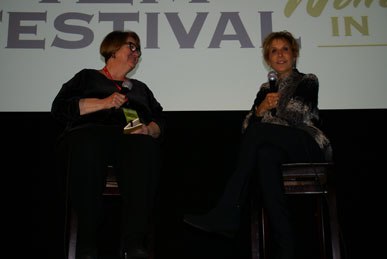
Terry Lawler (left) with Nancy Schreiber
The last part of the ceremony was a Q&A with the audience.
Q: Can you name a couple of films that are your personal favorites? Where your talent, the director’s talents came together along with the story, your personal life, politics, and everything else?
Nancy: I do try to find stories that mean a lot to me. I’m about to go to the Denver Film Festival where I have a film opening—also by a woman director—shot in Trinidad, and it’s about Sex Trafficking. It’s dramatic, but I loved being in Trinidad. Artistically, one of the first films I shot was Chains of Desire in Manhattan. The director, an Argentinean named Temí Lopez, had to leave in the middle of my interview. I thought, “Oh golly, I’ll never get this.” The producers made him come to my loft in Manhattan, and told me that he saw all these great art books in my house, and that’s why he hired me. We did have fun with the visuals on that. There’s so many opportunities to do documentary work, and there’s a lot of social issue documentaries. And art documentaries.
Q: This year in Rochester, we had the Cinematographer who shot Apocalypse Now, and he talked about the physical challenges of making that movie. What was the most physically challenging project you worked on?
Nancy: I did a pilot for HBO in Hawaii. And I remember that there was so much mud because they were having rains. We had taken over a banana plantation and built 27 barracks—it was supposed to be Vietnam. I shot it on Super 16, so this was probably during the 2000s. I just remember getting stuck in the mud. A scene had just wrapped. You had to drive a jeep halfway up the hill. You would have to stop and load the other four-wheel-drive vehicles and put different mud boots on. At the end, everybody’s boots were just so muddy, and I took stills of it because it was just so funny. Then Band of Brothers came out, and HBO didn’t want to do another war show, which was too bad. That was one of the hard ones. In Trinidad, I was working with a heavy, hand-held camera in 100 degree heat, so I’d just be dripping wet.
Q: We’re about the same age. I remember my mother and I watching The Last Picture Show. Later in life, I went and saw [title inaudible], and I was very taken by the lighting. The lighting wasn’t something you’d see everyday on TV and what not. Were there films where the DP did something with the lighting that you genuinely admired?
Nancy: A few films have really influenced me. Certainly the first Blade Runner and the new one—if you haven’t seen it, go. The lighting of both Blade Runners affected me. All of the Godfather movies, Annie Hall—Gordon Willis had so many different styles which meshed with the subject matter. The Conformist, by Bertolucci, that movie really affected me. I have to say that today the Mexican Cinematographers are just absolutely unbelievable and really talented. We’re lucky to have such great talent!
Q: Do you go to the theater and watch films? If you do, do you ever analyze their work?
Nancy: If I’m looking at the Cinematography only, there must be something wrong with the film. I actually am consciously looking at films that I’m just involved in watching the movie and how it tricks the emotions. I really like seeing films in a dark room with a lot of people. I don’t even turn on the television, and I don’t like to watch movies on TV. I try to get out as much as I can. I live mostly in Los Angeles and New York, and movies screen all the time. I just love the group experience.
Advertisements Share this: